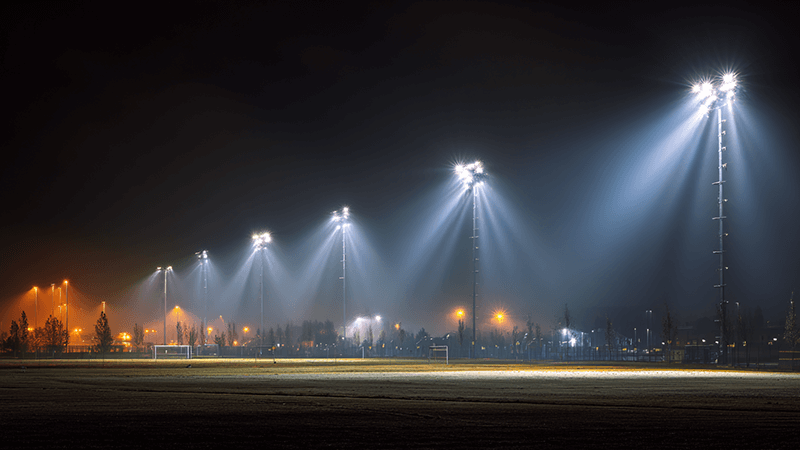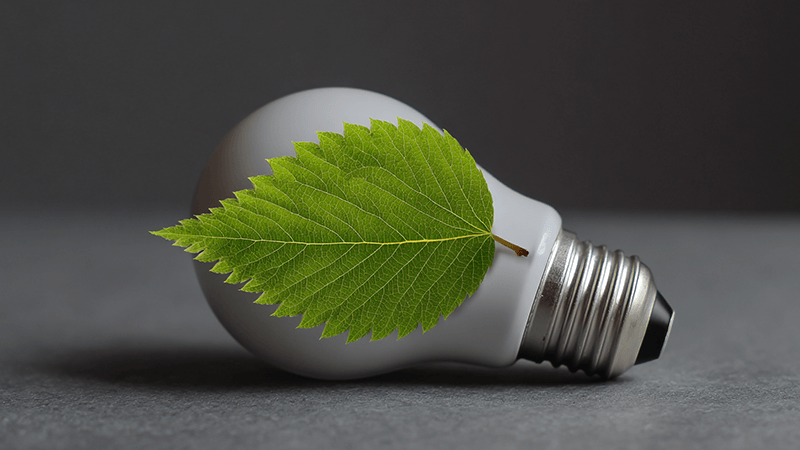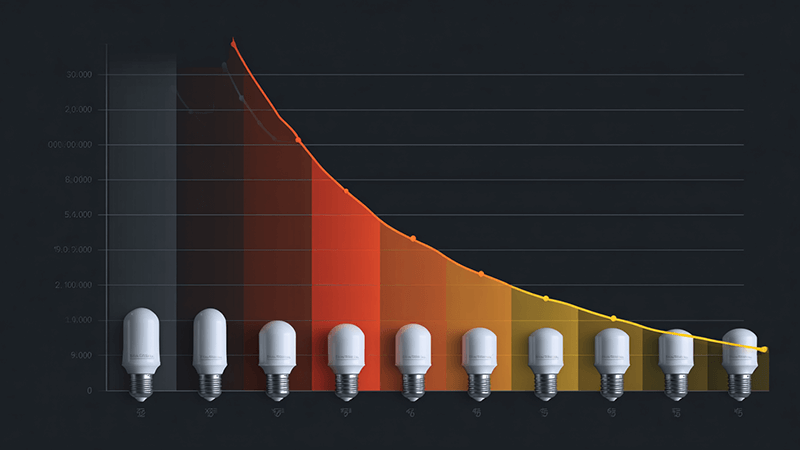Your floodlights look great on day one, but soon they start to peel, rust, and fail. This isn’t just bad luck; it’s a sign of hidden shortcuts in manufacturing.
Advanced coatings protect LED floodlights by creating a durable barrier against moisture, salt, and chemicals. This is achieved through using high-purity aluminum, meticulous surface pre-treatment, and applying a uniform, thick layer of protective powder or anodizing. This system prevents corrosion which compromises the light’s structure and electronics.

You might think an outdoor light is just an outdoor light. But I’ve spent my career in LED manufacturing, and I can tell you the differences are huge. The real story of a floodlight’s survival isn’t just in its IP rating or lumen output. It’s written in the unseen details of its protective coating. In my years helping clients like Shaz, a purchasing manager in the UAE, I’ve seen firsthand how a good finish is the difference between a product that lasts and one that fails. Let’s look deeper into what really makes a floodlight tough enough for the world outside.
Are all LED fixtures safe to use in outdoor environments where they may be exposed to rain?
You see "outdoor rated" and assume the fixture can handle the weather. But then failures happen, leading to costly replacements and unhappy clients. The real guarantee of safety is hidden.
No, not all LED fixtures are truly safe for long-term rain exposure, even if they are rated for outdoor use. True durability comes from the quality of the aluminum housing, the crucial pre-treatment process before painting, and the thickness and quality of the protective coating itself.

When I first started in this industry, I visited dozens of factories. The difference between them was shocking. Some were proud of their materials, while others were focused on cutting every possible cost. This is where the problems begin for buyers. An "outdoor" rating can be misleading if the foundation of the product is weak. True protection against rain and humidity isn’t just about a good seal on day one; it’s about making sure the entire body of the light doesn’t degrade and create new ways for water to get in.
The Foundation: Aluminum Purity and Thickness
A supplier might tell you they use "high-quality die-cast aluminum." But this phrase can hide a lot. To save money, some factories use recycled aluminum. Recycled aluminum contains impurities that drastically reduce thermal conductivity. This means heat from the LED chip gets trapped, causing the light to dim faster and fail sooner. Just as bad, these impurities make the housing prone to corrosion. Furthermore, the housing wall itself might be thinner to save material, making it physically weaker and less protective. The choice of raw material is the first, and perhaps most critical, step.
| Material Property |
High-Purity Die-Cast Aluminum |
Recycled/Impure Aluminum |
| Heat Transfer |
Excellent |
Poor (Traps heat) |
| Corrosion Risk |
Low |
High |
| Structural Strength |
High and Consistent |
Lower and Unpredictable |
| Resulting Lifespan |
Long, as specified |
Drastically shortened |
The Critical First Step: Pre-treatment
Before any paint is applied, the aluminum housing must be perfectly prepared. This involves cleaning, degreasing, and a chemical process like phosphating. This pre-treatment creates a surface that the paint can grip onto tightly. Unfortunately, this is a multi-step process that is easy to simplify or skip entirely to save time and money. When pre-treatment is done poorly, the bond is weak. The light might look fine out of the box, but after a few months in a place with changing temperatures and humidity, like the coast of the UAE, the coating will start to bubble, crack, and peel off in sheets. This is why you sometimes see lights that seem to rust from the inside out. The protective layer was never truly attached.
What is the major advantage of LED lighting in terms of environmental impact?
You want to market your projects as "green." But the term is used so often it can feel meaningless. Are the products you choose truly sustainable, or is it just a label?
The major environmental advantage of LED lighting is its superior energy efficiency, which cuts electricity use and carbon emissions. A truly sustainable LED, however, must also have a very long lifespan, which reduces manufacturing waste and the environmental impact of frequent replacements.

We all know that LEDs save energy. That’s the most obvious "green" benefit. But I believe the true environmental responsibility of a manufacturer goes deeper. A product that saves energy but needs to be thrown away and replaced every two years isn’t sustainable at all. The energy and resources used to manufacture and ship a new light often cancel out the electricity savings. This is why I focus so much on durability. A long-lasting product is a truly green product. And that durability often comes down to the quality of the finish.
The Myth of "Outdoor Powder Coating"
Nearly every manufacturer will claim they use "outdoor powder coating." This sounds protective, but the term itself means very little without understanding the process behind it. A quality process is about control and consistency. I’ve seen small workshops where workers apply powder coating by hand with a spray gun. The result is always an uneven coat. Some areas will be thick, but others will be dangerously thin, offering almost no protection. These thin spots are where corrosion begins.
Coating Thickness and Uniformity Matter
In a professional factory like ours, we use automated spray lines. Robots apply the powder, ensuring every single part of the fixture receives a perfectly uniform coating. We control the thickness precisely, aiming for a standard of 80-120 micrometers (μm). The difference is massive. A thin spot from manual spraying might only be 30-40 μm thick. It simply won’t stand up to UV radiation, salt spray, or humidity. For a purchasing manager like Shaz, specifying a minimum coating thickness is a simple way to screen out low-quality suppliers. You can even check this yourself with a simple magnetic thickness gauge.
| Coating Method |
Manual Spraying |
Automated Spray Line |
| Thickness |
Uneven (30-100μm) |
Uniform (80-120μm) |
| Weak Points |
Many thin spots |
Virtually none |
| Corrosion Resistance |
Poor |
Excellent |
| True Environmental Impact |
High (due to early failure) |
Low (due to long life) |
A robust coating ensures the light serves its full, long life, making it the most environmentally responsible choice.
What is the lifespan of LED flood lights?
You are promised a lifespan of 50,000 hours, but your fixtures are failing much earlier. This makes your promises to clients look bad and hurts your business.
The lifespan of LED flood lights is typically rated from 30,000 to 100,000 hours. However, this potential is only realized if heat is managed properly and the housing is protected from corrosion. Poor materials and coatings cause overheating and decay, destroying the light’s lifespan.

The number "50,000 hours" is based on a standard called L70, which means the time it takes for the LED’s brightness to fall to 70% of its initial output. It’s a lab number. In the real world, the two biggest killers of LED floodlights are heat and corrosion. Both of these problems are directly linked to the quality of the fixture’s body and its coating. A great LED chip inside a poorly made house is like a powerful engine in a car that’s rusting apart. The car will fail, and the engine’s potential is wasted.
How Heat Destroys Lifespan
I mentioned before how impure, recycled aluminum traps heat. This is a primary reason why LED fixtures fail to meet their promised lifespan. The LED chip is designed to operate within a specific temperature range. When the housing can’t pull heat away effectively, the chip’s temperature soars. This intense heat accelerates the degradation of the materials inside the LED package, causing the light output to drop very quickly. Instead of a gradual dimming over 50,000 hours, you might see a significant drop in just 10,000 hours because the fixture is slowly cooking itself.
The "Anodizing" Word Game
For high-end aluminum floodlights, some suppliers will promote an "anodized" finish. Anodizing can be an excellent, durable finish that is part of the aluminum itself. However, just like with painting, there are ways to do it cheaply. True, high-quality anodizing requires building a thick oxide layer (for example, AA15 grade means an average thickness of 15 μm) and then perfectly sealing the pores of that layer. Low-cost producers will create a very thin oxide film—less than 10μm—and use a cheap sealing process. This might look good initially but provides very little resistance to abrasion or corrosion. It’s a "word game" where they use the high-end term but deliver a low-end product.
| Anodizing Quality |
High-Quality (e.g., AA15) |
Low-Cost "Anodizing" |
| Film Thickness |
~15μm or more |
<10μm |
| Sealing Quality |
Excellent (e.g., cold seal) |
Poor (e.g., hot water only) |
| Wear Resistance |
High |
Low |
| Corrosion Resistance |
Excellent |
Poor to Fair |
Are LED flood lights waterproof?
You see an IP65 or IP67 rating and assume the fixture is totally safe from water. But you still find moisture inside, which leads to flickers and complete failure.
Many LED floodlights are water-resistant, shown by an IP rating like IP65. But "waterproof" is a very strong promise. True, long-term water resistance depends not just on gaskets, but on the housing’s ability to resist corrosion, which creates new water entry points over time.

An IP rating tells you how well a product resists dust and water when it’s brand new. For example, IP65 means it’s protected against dust and low-pressure water jets. That’s a great starting point, but it’s only a snapshot in time. A fixture is not a static object. It heats up and cools down, it’s exposed to UV rays, and in many places, it’s attacked by salt or pollution. I always tell my clients that a true waterproof system relies on every component working together, year after year. The chain is only as strong as its weakest link.
How Corrosion Destroys a Waterproof Seal
The biggest threat to a waterproof seal is the degradation of the housing around it. When a poor-quality coating starts to peel and flake off, it exposes the bare aluminum underneath. If that aluminum is impure, it will begin to corrode and pit. This corrosion creeps under the good parts of the paint and, most critically, to the edge where the glass lens is sealed. The corroded, uneven surface prevents the gasket from making a perfect seal anymore. Tiny gaps form. As the light heats and cools, the air pressure difference sucks moist air inside, where it condenses into water. An IP67 rating means nothing if the surface it’s sealing against has crumbled away.
A Reliable System of Protection
Thinking about a floodlight as a "system" is key. Being truly waterproof over the long term is the result of a chain of quality decisions. I explained this to Shaz for his projects in the UAE, where high humidity and salt spray are constant challenges. A reliable system needs every link to be strong.
| Component |
Weak Link (Chain of Failure) |
Strong Link (System of Reliability) |
| Housing |
Thin, recycled aluminum that corrodes. |
Thick, pure aluminum that resists corrosion. |
| Pre-treatment |
Skipped or rushed. Paint has no grip. |
Meticulous cleaning and phosphating. |
| Coating |
Thin, uneven paint that peels. |
Thick, uniform powder coating that endures. |
| Seals |
Good gaskets on a corroding surface. |
Good gaskets on a stable, non-corroding surface. |
| Result |
Water ingress, failure within 1-2 years. |
No water ingress, long and reliable life. |
An IP rating is a promise made on day one. A quality coating and housing are what keep that promise for the next ten years.
Conclusion
A quality coating is not an expense. It is the fundamental investment that ensures your LED floodlight’s performance, longevity, and reliability in any environment.